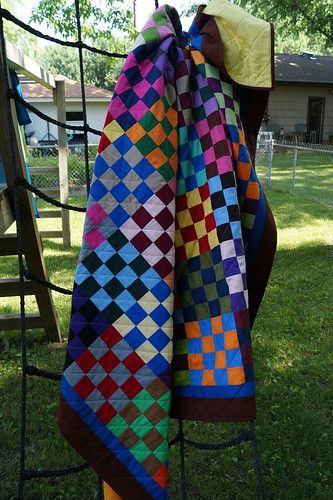An Amish style quilt is more than just a decorative piece—it’s a symbol of tradition, meticulous craftsmanship, and deep cultural meaning. Originating from the humble communities of the Amish people in North America, these quilts have stood the test of time, not only for their durability but also for their symbolic simplicity and beauty. Handmade with care and steeped in generations of quilting traditions, each quilt tells a unique story.
Many modern quilters and home decorators are drawn to the Amish style quilt because of its classic design and the values it represents—hard work, patience, and attention to detail. These quilts are known for their bold, solid colors, geometric patterns, and high-quality stitching, making them distinct from other quilting styles. Whether displayed as a centerpiece in a living room or used for cozy comfort on a bed, they offer both visual charm and practical warmth.
In a world filled with mass-produced items, the Amish style quilt reminds us of the value of handmade artistry. This article will explore what makes these quilts unique, how they are made, and why they continue to capture the interest of quilters, collectors, and home decor enthusiasts alike. We’ll also look at common questions people have when considering owning or making one, and provide thoughtful insights into this enduring tradition.

The History and Heritage Behind Amish Quilting
The history of the Amish style quilt dates back to the 19th century, when Amish women began quilting as a way to provide functional warmth for their families. Unlike the ornate and colorful quilts of other cultures, Amish quilts reflected the community’s values—simplicity, modesty, and usefulness.
At first, the Amish used darker, muted colors, often limited to solid shades due to their beliefs in modesty and plainness. Over time, these color palettes expanded slightly, but the core geometric patterns and symmetrical layouts remained. The early quilts were not meant for decoration, but as essential items in the home.
Another unique aspect of Amish style quilt traditions is how the quilting techniques and designs were passed down through generations. Mothers taught daughters, and quilting bees became important social events within the community. This helped maintain consistency in craftsmanship and deepened the cultural roots associated with each quilt.
Today, although some Amish quilters sell their work commercially, the tradition remains grounded in faith and family. The quilt is not only a utilitarian object but also a quiet expression of devotion, discipline, and pride. Collectors and admirers often view them as heirlooms, not only for their beauty but also for the stories and values they embody.
Quilters outside the Amish community have also adopted the style, paying homage to its clean lines and purposeful designs. Many see the Amish style quilt as the pinnacle of quilting artistry due to the discipline and handwork involved in each piece.
Finally, the continued popularity of these quilts shows how a simple craft can transcend cultural boundaries. Their elegance lies in restraint, and their warmth in tradition—a true testament to the timeless value of handmade work.
Design Features of Amish Style Quilts
One of the most distinctive aspects of an Amish style quilt is its minimalistic and geometric design. Traditional patterns include stars, diamonds, bars, and squares arranged in bold, symmetrical layouts. Each element is carefully chosen to create a harmonious and balanced look.
Most of these quilts feature solid fabrics rather than prints, a reflection of Amish values. Common colors include deep purples, blues, greens, and reds—often contrasted with black backgrounds to enhance the vibrancy of the shapes. The stark contrast adds to the dramatic and bold appearance of each quilt.
A signature element of the Amish style quilt is the hand-quilting technique. The stitching is usually done by hand with incredible precision, often forming beautiful, subtle designs such as feathers, grids, or hearts. These stitch patterns are both decorative and functional, securing the quilt’s layers firmly in place.
Borders also play an important role in design. A typical quilt will have a wide border framing the central pattern, giving it a finished and contained appearance. This adds a layer of complexity while emphasizing the symmetrical nature of the layout.
While many quilts follow traditional designs, some Amish quilters experiment within the boundaries of their customs. For example, a quilt might feature a nontraditional color scheme or a rare variation of a known pattern, showing the creativity and personal touch behind each piece.
When you see a quilt that is clean, bold, and geometrically perfect, you’re likely looking at an Amish style quilt. It’s this aesthetic integrity that keeps their appeal strong across generations.
Materials and Techniques Used in Amish Quilting
Creating an Amish style quilt involves more than just choosing fabric and thread—it’s about following a set of time-honored methods. Every detail, from fabric selection to stitching technique, reflects dedication to quality and tradition.
Traditionally, 100% cotton is used for both the quilt top and the backing. Cotton is favored not only for its breathability and softness but also for how well it accepts quilting stitches. Amish quilters rarely use printed fabrics, sticking to solid colors to maintain the aesthetic purity.
Batting—the material placed between the top and bottom layers—is typically made of natural fibers such as cotton or wool. This gives the quilt its warmth and structure. The batting must be evenly distributed and light enough for intricate hand stitching.
Stitching is perhaps the most time-consuming part of the process. Each Amish style quilt is hand-quilted using a technique passed down through generations. No machines are used, and each stitch is deliberate, often no more than 10 stitches per inch.
The quilting frame is another key component. Most Amish households use wooden frames that allow multiple people to work on a quilt at once. This not only makes the process efficient but also turns quilting into a community activity.
Ironing and careful measuring ensure that every piece of fabric aligns perfectly. Even the smallest error is noticed and corrected. Precision is a point of pride, and it’s this careful attention to detail that sets the Amish style quilt apart.
In essence, the process combines practical function with artistic devotion, resulting in a piece that can last for generations when properly cared for.
Why Amish Style Quilts Are Still Popular Today
In today’s world of fast fashion and mass production, the Amish style quilt offers something rare: authenticity. Many people are returning to handmade goods that reflect time, care, and tradition. These quilts represent all that—and more.
Decorators and homeowners appreciate the minimalist style of Amish quilts. Their bold patterns and clean lines fit seamlessly into both traditional and modern interiors. A well-placed quilt can transform a room, adding both warmth and personality.
The durability of a handmade quilt is another reason for its continued appeal. Unlike factory-made blankets, each Amish style quilt is built to last. The hand-stitching holds firm even after years of use, and the quality materials resist wear and tear.
Many also value the ethical aspect of buying Amish quilts. Supporting artisans who maintain a traditional lifestyle and craft means you’re investing in a sustainable product. It’s a purchase that supports heritage, not just function.
For quilters, learning Amish methods is a rewarding challenge. The focus on handwork and discipline helps improve one’s overall quilting skill. It also connects hobbyists to a larger historical context.
Collectors often seek out Amish style quilts as valuable heirlooms. Some families pass them down for generations, each piece becoming a legacy item imbued with meaning and history.
Above all, these quilts offer a connection to something real and grounded. In a digital, disposable age, they serve as a comforting reminder of the value of slowness, community, and handmade beauty.
Frequently Asked Questions About Amish Style Quilts
What is an Amish style quilt?
An Amish style quilt is a handmade quilt featuring solid colors and geometric patterns, traditionally made by the Amish community using hand-quilting techniques.
Are Amish quilts really made by hand?
Yes, true Amish quilts are hand-stitched, often by multiple members of a family or community. Machines are generally not used in the process.
What fabrics are used in Amish style quilts?
They typically use 100% cotton for both the top and backing, and natural fiber batting for the inner layer. Only solid-colored fabrics are used, not prints.
How long does it take to make an Amish quilt?
It can take several weeks to months depending on the size and complexity. Each quilt involves careful cutting, hand stitching, and finishing.
Can I buy an authentic Amish quilt?
Yes, they are available through direct Amish sellers, quilt fairs, or select markets. However, be cautious to verify authenticity as many replicas exist.
Why are Amish quilts so expensive?
Because they are handmade with high-quality materials and often take weeks to produce, their price reflects the labor, tradition, and craftsmanship involved.
Throughout this article, we explored the world of the Amish style quilt, diving into its history, unique design features, the crafting process, and its enduring popularity. These quilts are more than just blankets—they are cultural artifacts, hand-stitched with care and intention.
Whether you’re a seasoned quilter, an interior design enthusiast, or simply someone who appreciates meaningful craftsmanship, there’s much to admire in the humble but powerful artistry of Amish quilting.
If you’ve ever owned or created an Amish style quilt, or if you’re just beginning your journey into this beautiful tradition, we’d love to hear from you. Please leave your sincere opinion or suggestions in the comments. Your feedback helps us preserve and share this timeless art form with even more passion.
